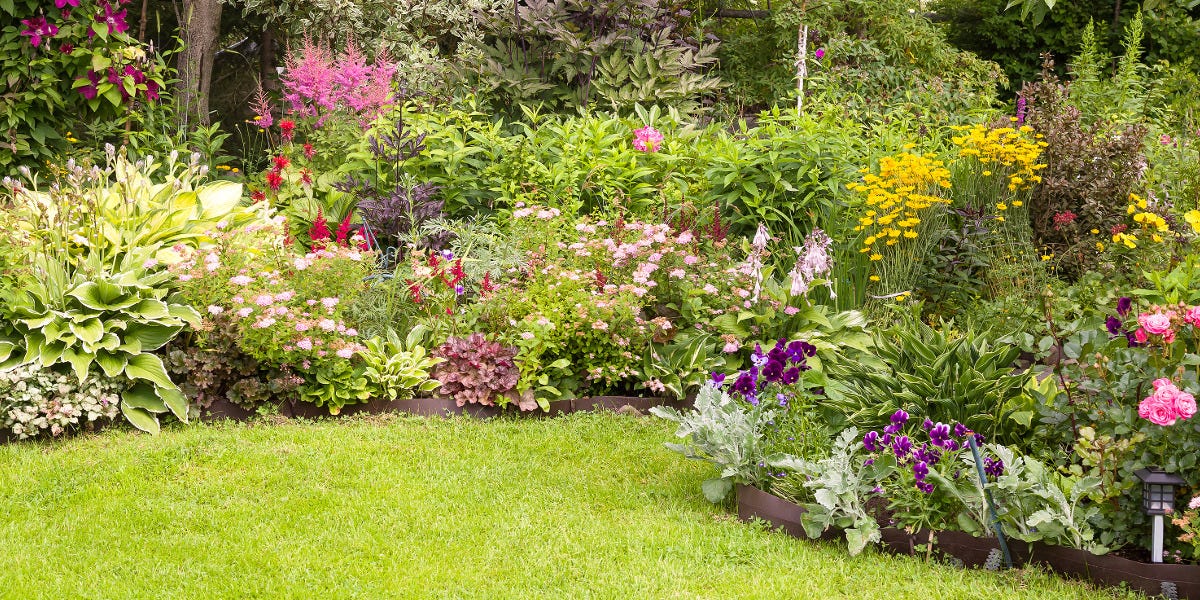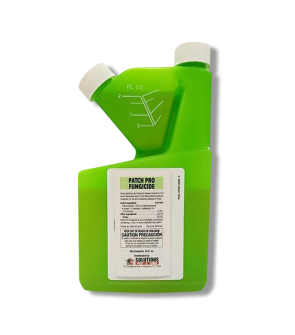Fungus & Diseases in Flower Beds/Ornamentals
Most Effective Products
Common Fungus and Diseases in Flower Beds and Ornamentals
Gardening flower beds and ornamentals are easy enough for homeowners, but things start to get complicated when plants look wilted or discolored. Diagnosing ornamental plant problems can be difficult, but a basic understanding of one of the common issues such as diseases can help you save your foliage.
The most common fungus and diseases to see on flower beds and ornamentals are anthracnose, flower blight, leaf spot, powdery mildew, and rust. Most of these diseases will not kill your plants, however, they definitely will be weakened making them susceptible to pests.
Diseases and fungus will not go away on their own and often weaken plants to the point of death. Use this DIY guide as an aid to help you distinguish between each plant disease and how to get rid of them from flower beds and ornamentals.
If you are not seeing a disease or fungus listed here then contact our customer service team by phone, email, or in-person at one of our store locations for professional advice on how to control the pathogen you are experiencing.
Identification
 Anthracnose has irregular tan to dark colored spots along the veins of leaves.
Anthracnose has irregular tan to dark colored spots along the veins of leaves.
Flower Blight

Flower blight looks like brown spots on flower petals, leaves, and stems. Eventually, they produce fuzzy gray mold on these spots or at the base of petals.
 Leaf spots appear as a circle or irregular shapes colored brown, tan, or black. Smooth or fringed edges around these spots will show, which can be colored yellow, green, orangish-red, light tan, brown or black. They will appear on lower and inner branches, and leaf surfaces covered by shade.
Leaf spots appear as a circle or irregular shapes colored brown, tan, or black. Smooth or fringed edges around these spots will show, which can be colored yellow, green, orangish-red, light tan, brown or black. They will appear on lower and inner branches, and leaf surfaces covered by shade.
 Powdery mildew have spots or patches that appear white to gray in color and powdery in texture. Often, they appear on the upper surface of leaves, but they can spread to the underside. They will also grow on flower buds, shoot tips, and blossoms of plants.
Powdery mildew have spots or patches that appear white to gray in color and powdery in texture. Often, they appear on the upper surface of leaves, but they can spread to the underside. They will also grow on flower buds, shoot tips, and blossoms of plants.
 Rust will have orange, yellow, brown, or red spores in masses of specks or spots on leaves.
Rust will have orange, yellow, brown, or red spores in masses of specks or spots on leaves.
Inspection
 On flower beds and ornamentals, anthracnose will appear on leaves and twigs.
On flower beds and ornamentals, anthracnose will appear on leaves and twigs.
Flower blights will grow on flower petals, leaves, and stems of flower beds and ornamentals.
Leaf spots are commonly on the upper leaf surface of ornamentals, but they can also develop on lower and inner branches and leafs covered by shade.
Powdery mildew grows on the top surface of leaves, beneath leaves, unopened flower buds, shoot tips, shoots, and plant blossoms.
Treatment
Step 1: Remove Damaged Plant Parts
 To fight back against diseases and funguses in flower beds and ornamentals, remove all infected plant material by pruning.
To fight back against diseases and funguses in flower beds and ornamentals, remove all infected plant material by pruning.
Prune parts of the plant that have become damaged. If the plant has severe disease advancement, you may have to start all over on the plant or move it away from other healthy ornamentals.
For any new plant growth, do not replant in the same area as disease pathogens frequently remain in the soil.
Step 2: Apply Fungicide

Chemicals such as fungicides are sometimes necessary to control problematic plant diseases and fungus in flower beds and ornamentals.
When using fungicides, always read and follow the label correctly as not all diseases will be controlled in one product or certain foliage cannot be treated with the selected product.
Patch Pro Fungicide is a systemic fungicide that controls a broad spectrum of fungi and diseases on turfgrasses, ornamentals, and other landscape and nursery plantings.
Applications will need to be done with either a hose-end sprayer or spray rig for larger treatment areas.
To control diseases in landscapes, apply 6 to 8 fl. oz. of Patch Pro Fungicide per 100 gallons of water every 21 days.
Spray the entire ornamental as a full coverage spray to the point of drip.
For flower blight, apply Patch Pro Fungicide when there is 5-10% bloom and again at 70-100% bloom.
Do not apply more than 5.4 gallons of product per acre per calendar year on turf, nurseries (field), and landscape plantings.
Do not apply Patch Pro Fungicide to African violets, begonias, Boston fern, or geraniums.
Key Takeaways
What Are Common Diseases on Flowers Beds and Ornamentals
- Common diseases and fungus on flower beds and ornamentals are anthracnose, powdery mildew, flower blight, leaf spot, and rust.
How Do You Treat Sick Flowers
- If possible, move plants away from other healthy plants. Next, prune away parts of the plant that are damaged or discolored to control disease spread and lessen the plants energy of repairs. Lastly, apply a fungicide like Patch Pro Fungicide.
What Are Signs Your Plant Has a Disease
- Common signs of disease and fungus on ornamentals are dead, discolored, or injured parts of the plant. Leaves and petals will curl, shrivel, or completely fall off plants depending on the disease.












































































































































































































































































































































































































































































































































